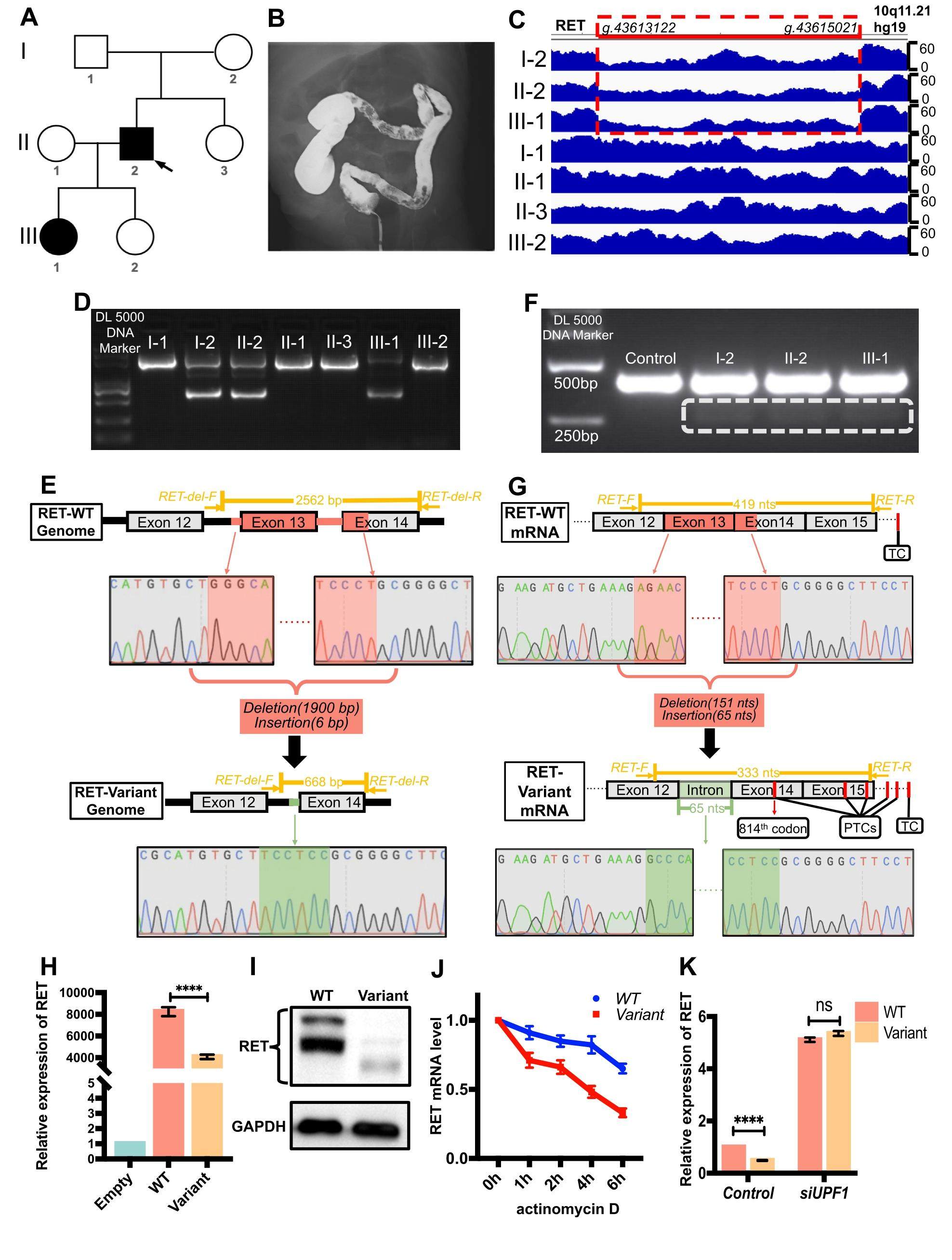
A novel structural variant of RET causes familial Hirschsprung’s disease via nonsense-mediated mRNA decay


Hirschsprung’s disease (HSCR) is the most common type of developmental gastrointestinal malformation causing intestinal obstruction in children, with an incidence of 1/5000 in live births. It is characterized by the absence of intrinsic ganglion cells in the myenteric and submucosal plexuses of the distal gastrointestinal tract, leading to the dysregulation of smooth muscle contraction/relaxation and resulting in intestinal obstruction. Depending on the length of the aganglionic intestine, HSCR can be categorized into short-segmental HSCR (S-HSCR), which affects up to the sigmoid colon from the anus, and long-segmental HSCR (LHSCR), which affects beyond the sigmoid colon. In some rare conditions, aganglionic lesions can affect the full length of the colon or even the whole intestine.
